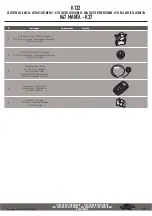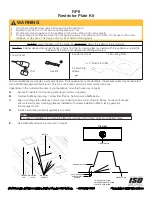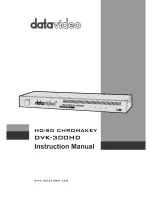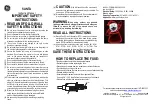
48
MEDEA Programming Manual
4.8
PrIO (In/Out) - RF - ZB
This can be used to configure the PrIOs, i.e. the programmable input/output points, the wireless and
ZigBee inputs and outputs of the system. The PrIOs are physical connection terminals that take on the
function of an input or output via programming.
It is accessed through the
CONFIGURATION
→ PrIO(In/Out)-RF-ZB
menu.
The table listing the PrIO-RF-ZB shows the total number of points used compared to the total number of
available points. The totals of point used as inputs, point used as outputs and free points (the PrIO that
can still be managed by the control panel, if other devices on BUS are added) are also shown.
Figure 42 - In/Out points (PrIO)
The list of all points in the system is displayed in table form.
The following information is provided for each point:
•
PHYS.ADDRESS
: This is the physical address of the point. The address is made up of two letters,
which indicate the type of device (UC = control panel, EP = expansion, KP = keypad, DK = key reader).
Within the single device the point is indicated by a dot followed by a sequential number. For example:
EP01.3 identifies point 3 of expansion 1.
•
DESCRIPTION
: This is the description of the PrIO. The field is read-only and must be edited in the
PROGRAMMING
– Input / Output menu.
•
ENABLED
: This indicates whether the point is enabled or disabled. When the point is disabled, the
lettering is light grey.
•
MODE
: This shows whether the point is configured as an input or output.
•
INPUT TYPE
: This applies only to inputs and shows the type of connection used for the input, or how
it is used. It is important to set the exact type of contact because incorrect selection prevents alarm
detection. The possible options are:
o
Normally Close
: In stand-by state, the contact of the detector connected to the input is closed at
terminal V+ (the alarm is triggered when the contact is opened). Not compliant with EN 50131.
o
Normally Open
: In stand-by state the contact of the detector connected to the input is open (the
alarm is triggered when the contact is closed to terminal V+). Not compliant with EN 50131.
o
Single Balance
: This is to be used when the detector has been connected to the input using the
single balancing wiring diagram (see
Installation Manual f
or details). Stand-by state, intrusion
alarm indication and indication of tampering by short-circuiting the wires are recognised by means
of two voltage thresholds. Complies with EN 50131 Grade 2.
















































